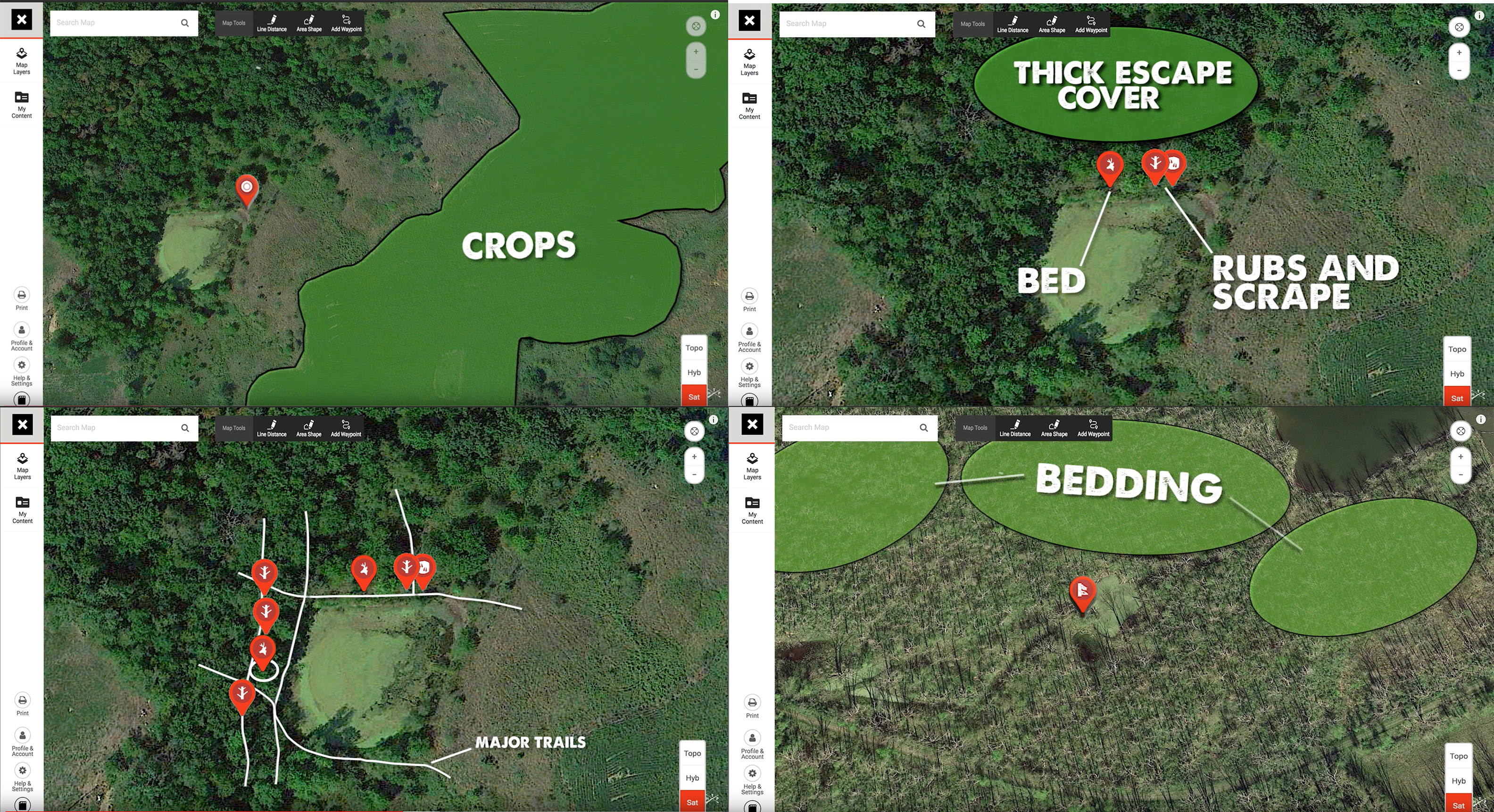When you’re thirsty, you probably have a few go-to favorite beverages to choose from – maybe a refreshing soda or an ice-cold glass of milk or even a tall cup of water.
While people must decide what to drink, white-tailed deer must decide where to drink – that is, if they need to drink much at all.
Jeff Sturgis, owner of Whitetail Habitat Solutions, has hunted water sources since 2004, but only if they’re in the right location. Sturgis is a whitetail hunting and habitat expert who helps people nationwide create an ideal whitetail habitat to boost their hunting setup. He explained how to identify the perfect water source location, how to create a man-made waterhole, and how hunters can use water sources to their advantage.
His first tip? Don’t hunt water just because it’s water.

Knowing how deer navigate water can help you with your hunting tactics. Photo Credit: Game and Fish Magazine
“Most of the time, natural water sources are not great hunting locations,” he said. “Deer won’t typically go out of their way to drink. So, if you’re sitting near the water and there’s no food or cover in the area, then there’s no reason for a deer to be there. It probably isn’t a good place to hunt.”
The foundation of daily deer movement is food. Sturgis said to identify food sources and bedding areas on the property you’re hunting. Then, if there’s a water source between the two areas, that’s the perfect place to hunt.
“I like hunting water sources that are between bedding and feeding areas,” he said. “Deer will stop at the water for a few minutes and move on, so it’s a real noninvasive, low-impact strategy that offers a great shot opportunity.”
Deer can go long periods without drinking anything because they often get the water they need from lush vegetation. However, deer typically leave their bedding and go to water in the evening before they find food, especially when it’s convenient. Therefore, it benefits hunters to hunt over water sources between bedding and feeding areas.
If you can’t find a water source, such as a pond, creek, lake or swamp, in the right location, Sturgis suggests creating a DIY waterhole with a 110-gallon tank.
He said the best time to create a waterhole is in May, so it fills with rainfall before the season starts. That timeline also gives deer a few months to find the waterhole and start using it. He recommends digging a hole and placing the tank underground so it looks natural.
Read Sturgis’s article “5 Steps to an Easy Whitetail Waterhole” and “Whitetail Waterhole Strategy and Maintenance” for more information.
Sturgis said man-made waterholes create multiple options for stand locations. He suggests putting two stands on a waterhole. Place one stand 20- to 25-yards from the waterhole and another stand 20- to 25-yards from the waterhole in the opposite direction. The stands will be 50 yards apart. This setup gives hunters a straight double-lung shot opportunity and allows them to hunt the waterhole in most wind directions.
Be warned, DIY waterholes don’t work well during wet seasons, or if there are multiple natural water sources in the area. Analyze your property and ensure there’s a waterhole need before you start digging.

Track deer habits to find the prime location. Photo Credit: The Hunting Public
Sturgis said deer need more water when it’s hot, but they also won’t move much to conserve their energy. So, hunting water on hot days is a hit-or-miss strategy. Chances are, deer will likely travel to water at night when the temperature drops. Deer also need more water during the rut when they’re constantly on the move. Sturgis loves to hunt waterholes and mock scrapes during the rut.
Additionally, hunters can use natural water sources to access hunting locations, cover their scent, and help determine deer movement patterns.
Use a boat, kayak or canoe to access hard-to-reach locations by water. Or, avoid spooking deer and slip into a hunting location by walking in a creek or alongside a lake. These access options are often quiet and stealthy. Plus, walking through water washes away scent on rubber boots.
Hunters can also position their stands so wind carries their scent over large bodies of water. Sturgis said big, open water sources help hunters maintain a low profile in the woods.
Lastly, hunters can use aerial or topographical maps to identify funnels or pinch points created by water sources. A funnel or pinch point concentrates deer movement into a small area. These locations are ideal for bowhunting setups, because you can use the terrain to predict where deer will travel.
Deer don’t typically cross ponds or lakes, either, so you’ll likely find trails near the water’s edge. Learn more about hunting ponds in this video by The Hunting Public.
Smart hunters don’t just set up on water sources and hope for the best. Instead, they analyze how deer use the water – if at all – then place their stands accordingly.